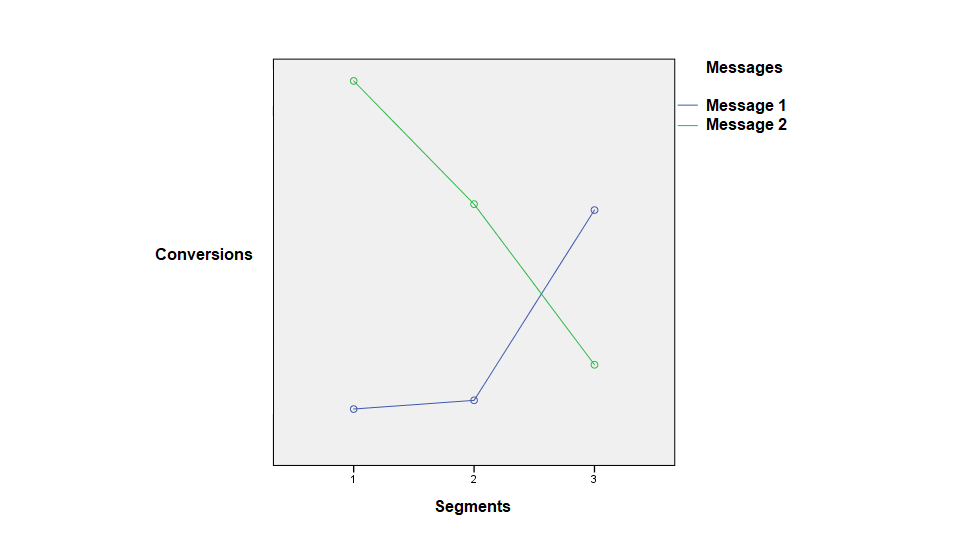By Lachezar Ivanov
“I am the life of the party”.
This is one of twenty survey items Cambridge Analytica used to build the personality profiles of hundreds of thousands of Americans. After performing a segmentation analysis, the company targeted groups of people with messages that matched their personalities, aiming to influence voting behavior. Whether segmentation works well for political campaigns is still a matter of debate. In marketing, there is long-standing and burgeoning evidence that segmentation is a valuable strategic tool.
What Is Market Segmentation?
In essence, market segmentation is the practice of dividing a heterogeneous market into smaller approachable homogeneous distinct groups. The basic premise behind this is that your tactical efforts will meet the needs and preferences of these groups with greater precision, which will result in more conversions. Instead of aiming for the average or typical customer, you adjust your tactical mix for different groups.
Market segmentation can help you increase conversions which can positively influence your profit. A study found that Facebook ads for a UK-based beauty retailer could deliver 40 percent more clicks if they targeted particular personality-based segments. The question of whether you consider yourself to be the life of the party is related to the personality trait extraversion. The mentioned study reported that extrovert customers responded more favorably to the message “Dance like no one’s watching (but they totally are)”. For introverts, the message “Beauty doesn’t have to shout” converted better.
According to Bain & Company’s research, companies that successfully implement segmentation as a strategy post annual profit growth of 15%, compared to companies less successful at segmentation that realize annual profit growth of 5%.
Segmentation Principles
A handful of things are essential to note here. First, in marketing, you need to use segmentation for increasing short-term conversions (i.e., sales activation), but not for long-term brand-building, which benefits from broad audience targeting. Second, meaningful addressable segments exist on the category level and not on the population level. Third, market segmentation and targeting require that you have a communication channel to reach the segments and conversion tracking (i.e., you can attribute purchases, sign-ups, etc., to specific stimuli, such as messages).
In the absence of conversion tracking, you can not directly link your segmentation and targeting efforts to their outcomes. Hence, without conversion tracking, you can not validate your segments and hypotheses about them through actual customer behavior. The absence of conversion tracking is one of the criticisms levied in the Cambridge Analytica case and raises the question of whether the company was successful in influencing voting behavior. Many digital channels, though, allow for conversion tracking, which you need to use when you target different segments.
How to Do Segmentation
1. Define your market
Search data can help your market research. Who are the customers that buy from the category? What are the channels that you can use to collect data from the customers and later communicate different tactical mix efforts (e.g., messages) to different segments?
2. Define the dependent and independent variables for your segmentation analysis
The dependent variable measures conversions and represents actual customer behavior (e.g., purchases, sign-ups). The independent variables form the basis for the segmentation. The interplay between the segmentation variables and your tactical mix variables influences the dependent conversion variable.
Selecting the relevant independent variables for your segmentation is the trickiest part. This is because many of the commonly used variables might not be relevant and might not influence behavior in your specific category. You need a deep understanding of the category and the factors that influence customer behavior in it.
To get such an understanding, you can rely on (ethnographic observational) customer research. You can also use academic literature to identify how a certain dependent variable is influenced by independent variables. A more general, yet useful framework (despite being developed for other purposes) that can help you think of variables that influence behavior is that of category entry points (CEPs). Think of variables related to the following questions:
- Why are customers buying from the category?
- How do they want to feel when buying from the category?
- When and where are they buying from the category?
- With what other products is the category purchase combined?
- With whom are they buying from the category?
3. Collect the data on the independent variables and create your segments
Reach out to the customers in your category and collect data on them (e.g., with a survey). The collected data is the sample you will use in your segmentation and targeting efforts. Once you have the data, you can define the number of segments. Go for two, three, or four segments, because (ideally) you will adjust elements of the tactical mix for each segment. There is a limited number of segments that can be exploited for profit.
You can use hierarchical cluster analysis and the dendrogram (i.e., a tree-like graph showing the sequence of cluster splits) it delivers to decide on the number of segments. For example, for a segmentation project that I did for a client in the finance sector, based on the dendrogram below, we decided on three segments. There is no exact science behind deciding on the number of segments using the dendrogram graph. The height of each join in the dendrogram graph represents the distance between clusters. The dendrogram below suggests one big split (differentiating one segment on the right side of the graph) and a second big split (differentiating two more segments in the middle of the graph). After determining the number of segments, you can use non-hierarchical K-means cluster analysis to save the membership of each participant to a segment.

4. Generate hypotheses for each segment on how to adjust elements of the tactical mix with the aim of increasing conversions
You can generate these hypotheses based on your deep understanding of the category, gleaned from customer research and academic literature. Armed with this understating, you can adjust elements of the tactical mix for each segment. For example, in the mentioned earlier UK beauty retailer case, the hypothesis might have sounded like this:
In the extrovert customers’ segment, there will be more clicks for the “Dance like no one’s watching” message than for “Beauty doesn’t have to shout”, while in the introvert customers’ segment, there will be more clicks for the “Beauty doesn’t have to shout” message than for “Dance like no one’s watching”.
5. Test your hypotheses with a (random) subsample of the full sample
You can use analysis of variance (ANOVA) to confirm or reject your hypotheses. If your hypotheses hold in the test with the subsample, you can use the best combination of segments and tactical elements with the full sample.
For example, in the mentioned above case I worked on with a client in the finance sector, we had three segments and two different messages. The statistical analysis revealed that segments 1 and 2 convert better when message 2 is used, while segment 3 converts better when message 1 is used (see the graph below).

The increased opportunities for fast and affordable data collection, communication with targeted segments, and conversion tracking unlock a new era of personalized persuasion in marketing. My advice: Do not leave money on the table, but use segmentation to increase conversions.
I want to thank Patrick Fagan and Alain Samson for providing feedback on earlier drafts of this article.


